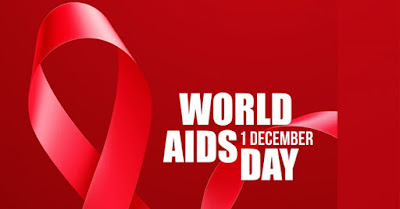Bitcoin’s supply is limited to 21
Million – a number that is expected to be reached around the year 2140. So far,
around 16.7 Million Bitcoins have been released into the system, with 12.5 new
ones released roughly every 10 minutes via a process called “mining” in which a
global network of computers competes to solve complex algorithms in reward for
the new Bitcoins.
These mining computers require a
vast amount of energy to run. As the price increases, more miners enter the
market, driving up the energy consumption further. A recent estimate by
tech news site Motherboard put the energy cost of a single bitcoin transaction
at 215 kilowatt-hours, assuming that there are around 300,000 bitcoin
transactions per day. That's almost enough energy as the average
American household consumes in a whole week.
If you want to buy bitcoin, you do
not need to buy a whole one. Bitcoin's smallest unit is a Satoshi, named after
the elusive creator of the cryptocurrency, Satoshi Nakamoto. One Satoshi is one hundred-millionth of a Bitcoin, making it worth around $0.0002 at current exchange rates.
Bitcoin has performed better than
every central bank-issued currency in every year since 2011 except for 2014,
when it performed worse than any traditional currency. So far in 2017,
it is up more than 1,400 percent. If you had bought $1,000 of bitcoin at the
start of 2013 and had never sold any of it, you would now be sitting on around
$1.2 million. Many people consider bitcoin to be more of a speculative
instrument than a currency, because of its volatility, high transaction fees,
and the fact that relatively few merchants accept it.
More than 980,000 Bitcoins have
been stolen from exchanges, either by hackers or insiders. That's a
total of more than $15 billion at current exchange rates. Few have been
recovered. Despite many attempts to find the creator of bitcoin, and a
number of claims, we still do not know who Satoshi Nakamoto is, or was. Australian
computer scientist and entrepreneur Craig Wright convinced some prominent
members of the bitcoin community that he was Nakamoto in May 2016, but he then
refused to provide the evidence that most of the community said was necessary.
It is not clear whether Satoshi Nakamoto, assumed to be a
pseudonym, was a name used by a group of developers or by one individual. Nor
is it clear that Nakamoto is still alive - the late computer scientist Hal
Finney's name is sometimes put forward. Developer Nick Szabo has denied
claims that he is Nakamoto, as has tech entrepreneur Elon Musk more recently.

Until earlier this year, it was
thought that Chinese exchanges accounted for around 90 percent of trading
volume. But it has become clear that some exchanges inflated their volumes
through so-called wash trades, repeatedly trading nominal amounts of bitcoin
back and forth between accounts. Since the Chinese authorities imposed
transaction fees, Chinese trading volumes have fallen sharply, and now
represent less than 20 percent, according to data from website Bitcoinity.
The total value of all Bitcoins
released into the system so far has now reached as high as $283 billion.
That makes its total value - sometimes dubbed its "market cap" -
greater than that of Visa, and bigger than the market cap of BlackRock and Citigroup
combined. Bitcoin is far from the only cryptocurrency. There are now
well over 1,000 rivals, according to trade website Coinmarketcap.
It is already possible to short
bitcoin on a number of retail platforms and exchanges, via contracts for
difference (CFDs), leveraged-up margin trading or by borrowing bitcoin from
exchanges without leverage. But a number of big financial institutions -
including CME Group, CBOE and NASDAQ - have recently announced that they will
offer bitcoin futures, which will open up the possibility of shorting the
cryptocurrency to the mainstream professional investment universe.
Many fewer than the 16.7 Bitcoins
that have been mined are actually in circulation and accessible, because of
forgotten passwords, accidental losses, hoarding, owners forgetting about coins
or even dying. It is impossible to know for sure how many Bitcoins have
been permanently lost, because those that have are still in the system, in
dormant addresses. But according to a December 2013 research paper by
the University of San Diego and George Mason University, 64 percent of the 12
million Bitcoins that had by then been mined had never been spent. Bitcoin
developer Sergio Lerner estimates that almost 1 million unspent Bitcoins belong
to the crypto currency’s mysterious creator.
There are 5,638,155 Bitcoins in the
1,000 biggest wallets - more than a third of all Bitcoins in circulation.
That makes the 1,000 biggest wallet-holders worth a collective $87 billion, at
current rates. The average fee paid to process bitcoin transactions has
soared over the past year, outpacing even the staggering price increase of the
cryptocurrency itself. Each bitcoin transaction now costs around $7.30
to process, up from around 30 cents at the start of the year, according to
trade website BitInfoCharts.
If you owned Bitcoin prior to Aug
1, 2017, you also own Bitcoin cash – a clone of the original. That is because
on that date Bitcoin underwent a so-called “fork” in which the underlying software
code was split into two. One unit of Bitcoin Cash is now worth more than $1300.
That adds roughly another 135 percent to the returns from a bitcoin investment
at the start of the year.



















